Pakistan was created to allow Muslims to live as free citizens without the fear of being dominated by a resurgent, occasionally hostile, Hindu majority. However, not feeling secure even in independence, Pakistani people have driven themselves to a social and historical narrative that strives to align our genetic origins with our religious roots in the East. In pursuit of this goal, we have also shed our heritage; the very values and customs that defined a nation. Some of these trends to delink from the indigenous Indian society started a millennium ago in an atmosphere of insecurity due to frequent armed incursions from the Western passes. After independence, the Pakistani nation should have felt secure enough to display affinity with this land but then the religious zealots took us on a confounded and misleading trajectory.
At the outset, let it be clear that there is no illusion about religion being an important factor in the lives of people all over the world. Even in this age of relative atheism, “living together” and secularism in the liberal Western countries, where people have been estranged from religion, the church continues to hold a visibly important place in society. Irrespective of the level of affinity with religion, births, deaths and marriages are often solemnized as religious events in the church by a priest. Even under the communist regimes, where religion was officially abolished and legally suppressed for a hundred years, people continue to find solace in divine convictions.
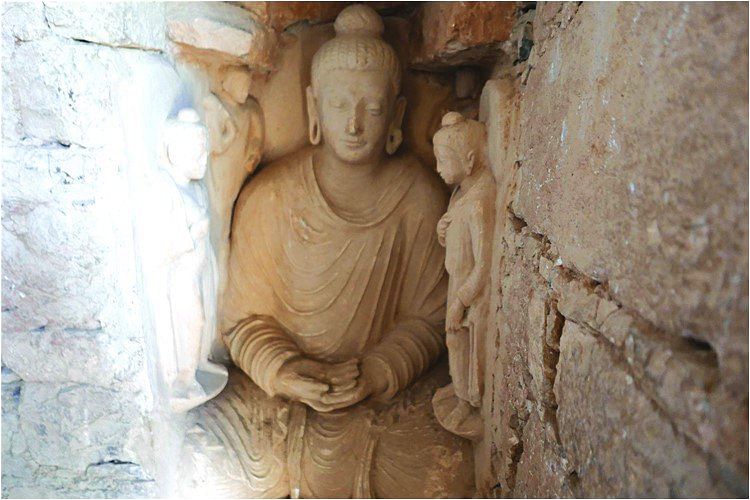
However, we in Pakistan have employed religion as a pivot to distance ourselves from our own land, culture, history and heritage. There has been little realization that in attempting to be what we are not and in rejecting what we are, we will be lost as a people. Being neither here nor there implies that we are nowhere. We have an apt proverb in Urdu for this situation that describes a creature as one half partridge and the other half a quail. That is our true description too.
In trying to move away from being Indians, we have induced ourselves to be Arabesque or Persianate. Now, of course, the Arabs, Persians and Turks are our closest social and religious kith and kin, our natural allies and we feel a natural affinity for them. A large section of our people carries their genes, as well as habits of dress, food, culture and surnames. However, we belong to the South Asian Subcontinent. We are neither Arabs, nor Turks, nor Persians. Even if we try to be one of them, we shall become unacceptable intruders and imposters. Try telling an Arab that in being a Syed, one is an Arab; or telling a Turk that one’s surname of Bokhari entitles one to be a Turk; or a Persian that being a Shirazi by name, one is Persian. Instead of acceptance, such a claim can only raise a mocking smirk!
Also read: A glacial lake in PoK is threatening people, and could mean the Indus river basin is drying
One staggering loss in this identity crisis has been a name that has been appropriated by our Eastern neighbour. We are children of the Indus. Most of the country and its nearly entire grain producing farmlands are drained by this river and its numerous large and small tributaries. There are three major geographical divisions of the Subcontinent. One of them is the Vindhya Hill ranges that separate North and South India. The second is the gentle hump separating the east-flowing Ganges and its tributaries and the West-flowing Indus and its tributaries – this distinguishes the modern nations of Pakistan and Bharat.
The Persians called the land Hindush, a Sanskrit equivalent of Sindhu, which was the historical local reference to the Indus River. Even the ancient Greeks referred to the Indians as Indoi, which translates as “The people of the Indus”. We, the people of Pakistan were therefore in error in simply relinquishing the name ‘India’ to our eastern neighbour. It is our name.

The great Sanskrit poem Mahabharata tells us that Bharat, meaning the ‘Cherished’, was a descendant of the Lunar dynasty and was the ancestor of Kauravas and Pandavas, two antagonists of that epic battle. We are also told that he sacrificed horses on the banks of the Yamuna, the Saraswati and the Ganges, but none for the Indus. Bharat, therefore, is the proper religious, cultural and natural name of a country that reveres the Mahabharata and the Ganges.
That the people beyond the Indus were called Indoos or Hindus, who happened to be of a different religion, is a geographical allusion and not a religious one. Nevertheless, we the people of Pakistan, irrespective of their religion, are the true Indians; the inhabitants of the land of the Indus. Of course this cultural loss has now gained permanence as Bharat and India are the official names of our eastern neighbour but we need to be mindful of our cultural loss in losing our rightful alternate name.
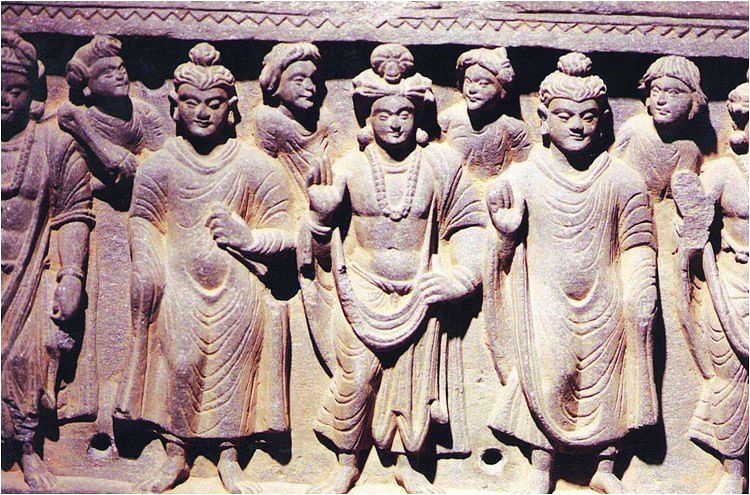
The second loss is that of historical narrative. This is a great loss and has multiple dimensions. The Subcontinent was ruled by Sultans of Turkish and Persian origin. for seven hundred years, from the Ghaznavid raids in or about 1000 AD to Nader Shah’s invasion in 1739 AD. These ruling families, their fellow migrant noble compatriots and their chroniclers legitimately traced their history to their own lands of origin. Unfortunately, this trend, fuelled by the religious class, crept in the psyche of most of the Subcontinent’s Muslims. My paternal grandfather’s great grandfather converted to Islam. He was a migrant from Kashmir to Amritsar. My family had lived in the valley for centuries since the Aryan irruption from Central Asia. How do I shun or escape this history and at what point do I cut short my past and dishonestly develop factitious links to some prominent town or personality of the erstwhile Abbasid province of Khorasan? This is not to say that those who do so, believing that to be their factual lineage, are wrong but the question still stands: at what point in time does one start belonging to the land that has nourished one’s forefathers and delete the various prefixes and suffixes that indicate them to be progeny of intruders and raiders of this land?
Also read: Vigilantism is central to RSS’ mission of organising Hindus & defending their interests
When renouncing the history of our part of the land, we have become alienated from some of the sons of this soil who should have done us proud. The first of these is the dignified Raja Porus who was born in the Punjab and his kingdom extended over the Chaj Doab – the land falling between the rivers Jhelum and Chenab. His blood descendants are more likely to be living amongst us rather than across the border. We should claim him as one of our heroes. There is hardly any reason for repudiating his legacy from our national narratives especially when the famous battle of the Hydaspes, between the ancient Punjabi armies of Porus and Greek forces of Alexander the Great was fought in 326BC. That happened 900 years before Islam and 300 hundred years before Christianity came into being. We live on an ancient land that was a thriving concern much before these religions came into existence. We should be proud of that.
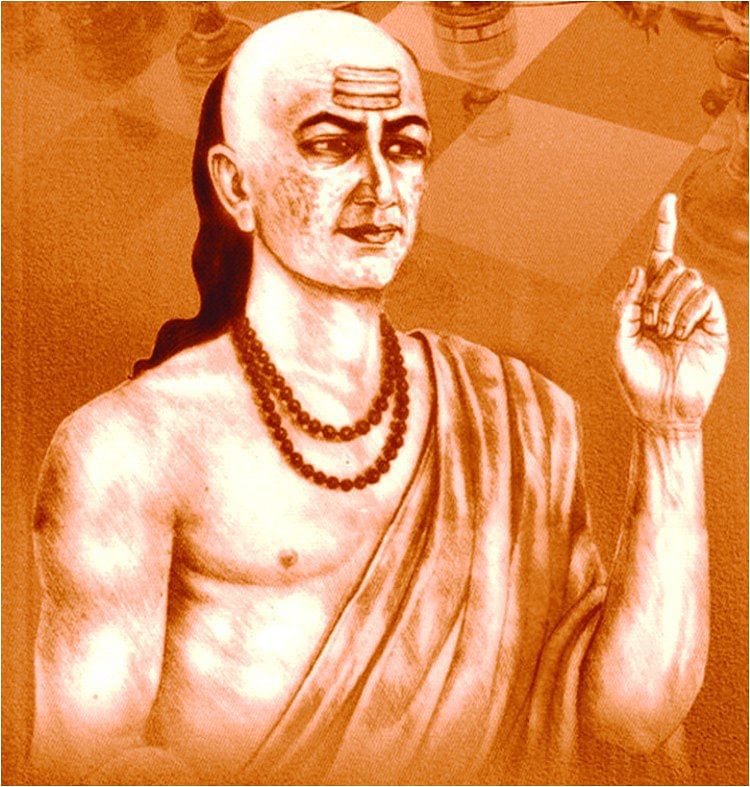
Taxila – Takshashila – of the ancient world- was the centre of a great civilization. One of its greatest luminaries was Chanakya, also known as Kautilya. He was a philosopher, a political scientist and an economist. His Arthasastra is perahps the first ever treatise on politics, statecraft and economics, predating Machiavelli’s The Prince by 1,800 years. He mentored Chandragupta, the architect of the Mauryan Empire and served as his Chief Minister. He was in his 40s when Alexander traversed from north to south through the land that constitutes all four provinces of Pakistan. He helped in defeating and expelling the Greeks from Punjab to well across the Indus. He is perhaps the greatest Indian of the ancient world and he was born and raised in Taxila; on the northern slopes of Islamabad’s Margalla Hills.
For some reason, we in Pakistan today portray Chanakya as a villain and a demon whereas he was a realist and understood the complexities of governing a large empire populated with diverse nationalities. He was a great philosopher of political science and laid the foundations of this discipline of scholarship. His appearance in the sketches available on the internet casts him as a typical temple priest. They are images conceived by a Brahmanical mindset and may or may not bear any similarity to the historical Chanakya. However, that is immaterial. He, too, lived much before the advent of Islam or Christianity and Pakistanis should not hold a religious grudge against persons of pre-Islamic times. We should be proud that our land – in the neighbourhood of our capital city – gave birth to this sage. We could even establish a department in Taxila university in his name to teach political science and political economy, the subjects that he conceived.
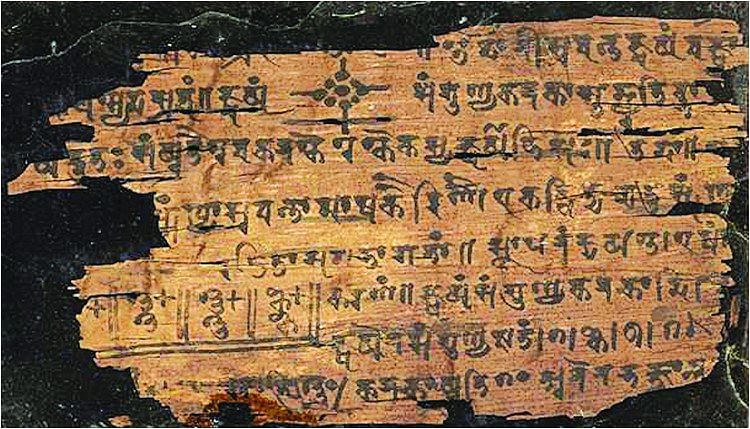
Among so many others, another local achievement of great significance that we have neglected to tell our children is the fact that the oldest mathematical manuscript in the world was found at Bakhshali, a village north-east of Mardan. The document, carbon dated to AD 224-383, contains the first recorded zero in history. The 70 leaves of birch bark contain mathematical rules, problems and their solutions in arithmetic, algebra and geometry, on topics of fractions, square roots, progressions and equations of linear and quadratic type. That is a lot of modern calculations. No wonder that India is acclaimed as the original home of numerals and mathematics! It flourished in the regions encompassing the Taxila civilization from where it spread eastwards to the rest of the Subcontinent and westwards to Persia and beyond.
The cultural and scientific achievements that are the legacy of the Gandhara civilization are primarily our heritage and not necessarily that of the people of the Ganga-Yamuna or trans-Narmada regions who now take the overwhelming amount of credit for these inventions.
It is actually the ancestors of modern-day Pakistanis who have given numerals and mathematics to the world. We should feel that pride and claim the honour.
The next part of this series will discuss our lost heritage in terms of festivals, names and religious figures.
Parvez Mahmood retired as a Group Captain from PAF and is now a software engineer. He lives in Islamabad and writes on social and historical issues.
This article was originally published on The Friday Times.


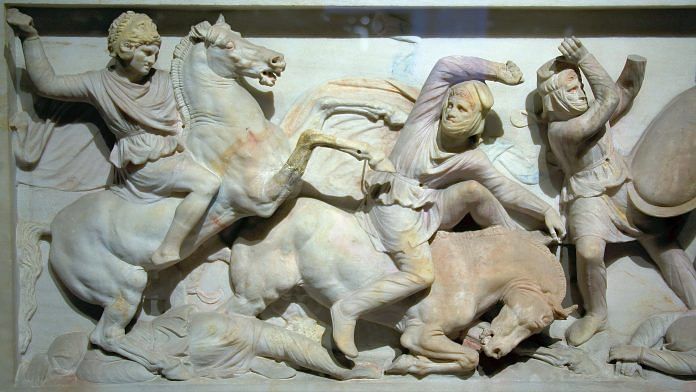

Crisis of identity, how sad, how any one can denied about his own forefathers… heartbreaking, totally lost. We the people of present day Bharat are trying our best to preserve and follow our old culture. Otherwise in past Muslim invaders tried their best to destroy it.
Pakistan is India .. India is also India . Whole SOuth Asia is India . Give a Gali in Hindi or Urdu in any south Asian country and see how people react .. it’s same every where . This shows we understand each other and are similar people. Thanks
People of Pakistan are the REAL Indians as per the history we gave up our real name INDIA to our eastern neighbor. The real INDIA has been AND ALWAYS BEEN present Pakistan. Our eastern neighbor is living off of our pre-Pakistani history.
That’s because pakis became bigots and religious retards….how an Islamic Pakistan will acclaim hindu heritage, who consider raja Dahir as evil
To the people who praise outsiders as heros and saviors as kafirs… Don’t have the right to call themselves as Indians…. You people better to be an Imposters for Arab turk and kuch bhi….. The essence of history lies with the people more than place
Pakistanis need to realize that they are part of the INDIC LOG or VOLK… or Desis in common parlence. Any amount of sommersaulting or denying this is not going to help you one bit. KNOW THE TRUTH and ACCEPT IT. TRUTH ALONE TRIUMPHS.
People from all of South Asia are Desis and South Asia means Afghanistan+ Pakistan + India + Nepal + Bhutan + Banagladesh + Sri Lanka + Maldives.
We have a common ancestry, culture and history.
There is no use in fighting and thwarting the IDEA WHOSE TIME has come: The formation of the UNITED STATES OF INDIA.
A true awakening or a need of the hour?
Not entirely accurate, and I object profusely to this Indo-centric narrative being pushed down the throat of Pakistani’s.
The lands and peoples that constitute Pakistan today consist of primarily Indo-Aryan ethnolinguistic groups, mostly in areas East of the river Indus such as Punjabi’s, Sindhi’s and Dardic Indo-Aryans such as Shina, Kashimiri and Khowar and Kalash. However west of the Indus, Pakistan has primarily Iranian ethnolinguistic groups such as Pashto (Eastern Iranian language), Balochi (North-western Iranian language), Ormuri, and Wakhi indigenously.
At the same time the concept of a unified ‘India’ is a very vague and abstract concept anyway. Just like in prehistory, Pakistan was once the westernmost extermity of the Maurayan (Indo-Aryan) empire, similarly it was the easternmost extermity of the Achaemenid (Iranian) empire as far east as Chenab river in Punjab, and Taxila served as a regional capital for both these enpires in succession. Just like the Vedas mention lands of present day Pakistan as the Vedic homeland, the Zoroastrian Avestan mentions most of Pakistan including Punjab as part of the central Zoroastrian homeland.
Yes, Pakistan has little do with ‘Persianism’ apart from the shortlived Achaemenid period, but Persiansim just happens to be the most celebrated sub-culture within Iranianism which is something larger. Iranian ethnolinguistic groups indigenously inhabit around 65% of Pakistan’s territory and atleast 30% by population.
Even in more recent history the land’s that were annexed by the British and slapped with the label of “British India” were from various empires, both Iranian and Indo-Aryan such as Sikh empire (Indo-Aryan), Sindh (Indo-Aryan), Kashmir (Indo-Aryan), Khan’s of Kalat (Iranian), Qajar Persia (Iranian with Turkic rulers) and Duranni (Iranian) empires.
This exclusively Indo-centric narrative is detrimental to Pakistan’s existence and would be a self-defeating effort at constructing a nationalist narrative in Pakistan. What Pakistan needs an encompassing and total view of the history that will challenge the hegemony of Indo-Aryan history over the entirety of the lands and peoples that consistute Pakistan today, and recognize the dualism that contributes heavily to the living cultures of present-day Pakistan.
I will add to what Mr. Kamil has written.
It is true that a unified India doesn’t have a clear meaning. In fact, with the easy mobility available now, India has never been more united as it is now with a large economic relocation, cross ethnic marriages and cultural mixing. The point stressed in the article is that the concept of ancient India relates to the lands that fall within Pakistan with occasional and marginal extensions in to eastern united Punjab. The Yamuna-Ganga culture is independent of Indus culture. Some cross cultural influences are imminent but they are just that; natural interaction between neighbouring cultures.
The Ghandhara culture cannot be called an off shoot of any Persian version. That would be miss reading history. The epicentre of Ghandhara was Taxila-Swat axis. It spread on both sides of the Indus with equal radiance. It would therefore be wrong to view this river as any kind of boundary. Indus is fordable at many locations, allowing travel and migrations across. That is the reason for spread of Ghandhara, Bactrian and Hindu Shahi from Afghanistan to Punjab.
I am not an anthropologist and will only make perfunctory remarks. The 30% Iranian linguistic groups, though they are not that much, who are the tribes living along the western borders of Pakistan are really the stranded tribes who refused to submit to western invaders and to evade assimilation/annihilation, went into ‘hiding’ in difficult barren terrain that was not sufficiently attractive to booty hunting raiders. These tribes could very well be the Indo-Scythian. Theytribes have paid a heavy price for their independence. They have been socially and technologically stuck in some remote centuries. The only thing they have learnt is to use and make guns. Fearful of outsiders and feeling threatened, their only achievement has been to disallow others to enter their areas. They had little to contribute to civilisation between the Margalla hills and the Hindukush mountains. The only time they have had any real mobility is since 1947 when the State has encouraged them to mix by offering them education and vocations in country and Middle East.
These incursions from neighbouring lands is not novel. The Indian NE is populated by Burma-Tibetan and Sino-Tibetan people and were reluctant to allow Indians to enter their area along the upper reaches of Brahmaputra plains.
Indo-centric narrative for Pakistan may or may not dangerous for her existence. That should be a consideration of research. The only thing that matters is that it is true. Harappan and Ghandhara cultures developed here and not in the Gangetic plains or Deccan plateau. These two lands, as the western neighbours, were beneficiaries of forefathers of people,living in Pakistan. If that truth is dangerous, let it be so.
Deep and sensible article.I cant validate the claims but looks good.In my personal. Opinion if people understand s the artiicle we can have an ashtoning and powerful. Society.But the light isn’t seen.